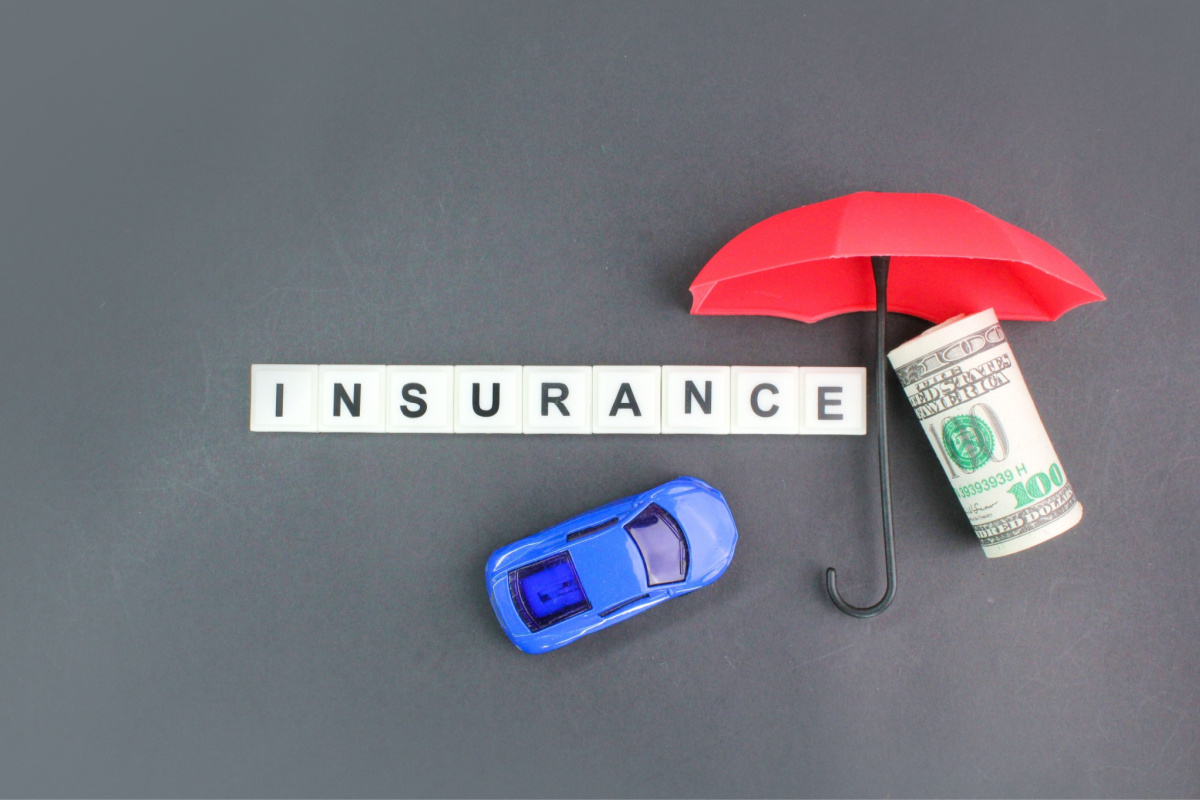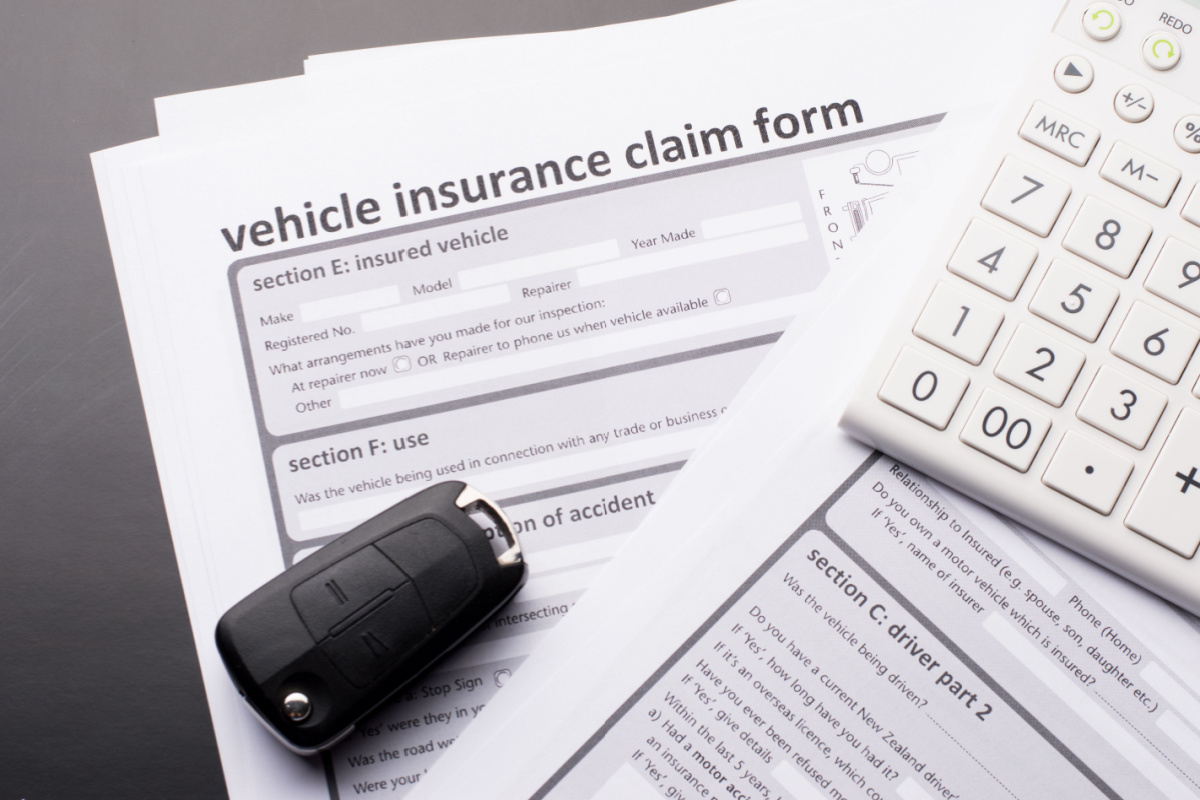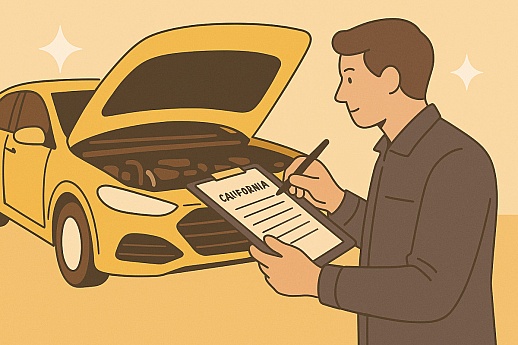Comprehensive Car Insurance Explained: What It Covers & What It Doesn’t
When thinking about auto insurance, we typically think of protection from car accidents. However, accidents aren’t the only situations that can damage your vehicle. What happens if your car is damaged from natural disasters or is stolen? Comprehensive coverage can help protect against these instances.
What is comprehensive insurance, you might ask? It is your safety net for the wide range of unexpected incidents that are outside your control, such as theft, vandalism, or damage from severe weather. Yet, despite its broad coverage, comprehensive insurance is often overlooked.
In this article, we will dive into the details of comprehensive auto insurance, clarifying what it covers, what it doesn’t, and who needs it. We’ll also discuss the factors that influence its price and how deductibles come into play. So, let’s get started!
What Is Comprehensive Car Insurance?
Imagine you’re on a leisurely Sunday drive with your favorite music playing on the radio when a deer leaps onto the road out of nowhere. Or perhaps, you wake up one morning to find your beloved car missing from your driveway, stolen in the night. This is where comprehensive auto insurance comes into play.

Comprehensive car insurance covers damage to your vehicle that is not caused by a collision with another car. This type of insurance is typically optional, meaning you’re not legally required to carry it in most cases. However, if you’re leasing or financing your car, your lender may require it.
What Does Comprehensive Insurance Cover?
Here are the most common scenarios typically covered by comprehensive auto insurance:
- Theft: If your car is stolen, comprehensive insurance can cover the cost of replacing it.
- Vandalism: Damage resulting from deliberate acts of destruction or defacement is covered.
- Fire: Comprehensive car insurance covers damage due to fire, whether from a garage fire, a wildfire, or even an engine fire.
- Natural disasters: It also covers damages caused by hurricanes, earthquakes, tornadoes, hailstorms, and floods.
- Falling objects: This could be a tree branch, power lines, or debris from a construction site.
- Damage from animals: Whether a deer runs into your car or a bear decides to explore the inside of your vehicle, comprehensive auto coverage includes damage caused by animals.
- Civil disturbances: This includes damage from riots, protests, or similar civil disturbances that result in damage to your vehicle.
- Glass damage: Often, comprehensive insurance can cover repairing or replacing your car’s windshield or other glass components if they’re cracked or shattered.
What Doesn’t Comprehensive Insurance Cover?
While comprehensive auto insurance covers a wide range of incidents, here are the most common scenarios where this coverage would not apply:
- Collision with another vehicle: Damage caused to your car from colliding with another vehicle is usually covered by collision coverage, not comprehensive auto coverage.
- Damage to another person’s vehicle: If you’re at fault in an accident and cause damage to the other party’s vehicle, comprehensive coverage will not cover the repairs.
- Medical expenses: If injured, the medical bills for you or your passengers are covered by personal injury protection or medical payments coverage instead of comprehensive insurance.
- Damage from neglect or improper maintenance: If your vehicle suffers damage due to lack of maintenance or neglect, such as engine damage due to not changing the oil, comprehensive auto insurance will not cover these costs.
- Personal belongings inside the vehicle: If personal items inside your vehicle are stolen or damaged, these aren’t typically covered under comprehensive auto insurance.
- Wear and tear: General aging, including mechanical breakdowns, tire wear, or damage from rust or corrosion, is not covered by comprehensive insurance.
Is Comprehensive Auto Insurance Required by Law?
Contrary to mandatory coverages like liability insurance, comprehensive car insurance is not typically required by law and is considered optional. But while the state may not mandate comprehensive insurance, it might be required in particular circumstances.

For instance, if you’re leasing a vehicle or have a loan on your car, your lender or leasing company will likely require you to have comprehensive auto insurance. This requirement protects their investment in the vehicle until you’ve fully paid off your loan or finished your lease term.
Comprehensive vs. Collision Insurance
Comprehensive and collision insurance often get mixed up. However, they provide distinct protections – comprehensive coverage protects your vehicle from non-collision-related incidents, while collision coverage pays for the damage to your vehicle if it hits another car or object.
Neither comprehensive nor collision insurance is typically required by law. This table summarizes the main differences between these two coverage types:
The Difference Between Comprehensive & Collision Insurance
| Comprehensive Insurance | Collision Insurance | |
| Covers damage from accidents with other vehicles | No | Yes |
| Covers damage from hitting an object (tree, guardrail, etc.) | No | Yes |
| Covers damage from car rollover | No | Yes |
| Covers fire damage | Yes | No |
| Covers theft | Yes | No |
| Covers vandalism | Yes | No |
| Covers damage from natural disasters (flood, hail, etc.) | Yes | No |
| Covers damage from animals | Yes | No |
| Covers damage from falling objects | Yes | No |
| Required by law | No | No |
Comprehensive vs. Full-Coverage Insurance
When comprehensive and collision coverage are bundled together, they constitute ‘full coverage. Full coverage auto insurance isn’t a specific insurance type like comprehensive or collision. Instead, full coverage car insurance includes a combination of liability, comprehensive, and collision coverage.
Contrary to what the name implies, full coverage doesn’t mean that every conceivable type of damage or loss is covered. Full coverage options will vary by insurance provider depending on the types of coverage they offer. Full coverage insurance options may include the following types:
- Liability Insurance: This is mandatory in most states and covers the cost of bodily injuries and property damage you cause to others in an accident. In other words, if you are at fault in an accident, your liability insurance will pay for the medical expenses of any injured parties, as well as the costs to repair or replace another driver's vehicle or other damaged property. It's important to note that liability insurance does not cover your own personal injuries or property damage.
- Collision Insurance: This pays for damage to your car resulting from a collision with another vehicle or other objects when you're at fault.
- Comprehensive Car Insurance: This coverage pays for damage to your car from causes other than collision, like theft, vandalism, fire, natural disasters, and damage from animals.
- Uninsured/underinsured motorist coverage: This plan covers you if you’re in an accident caused by a driver who is either driving without car insurance or doesn’t have enough insurance to cover the damage caused. It may also cover you in a hit-and-run situation. The coverage usually includes both bodily injury and property damage.
- Medical payments coverage: This coverage helps pay for medical costs related to a car accident, regardless of who is at fault. This can include hospital visits, surgery, and X-rays.
- Personal injury protection (PIP): This is similar to medical payments coverage, as it typically covers medical bills after an accident. However, PIP can also cover a broader range of expenses, such as out-of-pocket costs like lost wages or childcare expenses you may incur due to the accident.
Comprehensive Insurance Deductibles and Limits
Understanding the insurance deductibles and limits is the next step in getting familiar with comprehensive car insurance. These elements directly influence your out-of-pocket costs and the amount your insurer will pay out during a claim.
Comprehensive Deductibles
This is the amount you’re responsible for paying out-of-pocket before your insurance coverage kicks in. If you file a claim under your comprehensive auto insurance, your insurer will subtract your deductible from the total cost of the loss. The remaining balance is what your insurer will pay out up to your policy’s coverage limit.

Comprehensive deductibles can range from $100 to $2,000 in most states. For example, if you have a $500 deductible and file a claim for damages totaling $2,000, you would pay the first $500, and your insurance company would pay the remaining $1,500.
You can often choose to set your deductible amount when you purchase your policy. Opting for a higher deductible generally leads to lower premium costs, as you’re assuming a greater portion of the financial risk. Conversely, choosing a lower deductible means your premiums will typically be higher, but your out-of-pocket costs will be less in the event of a claim.
Comprehensive Limits
A limit is the maximum amount your insurance policy will pay for a covered loss. With comprehensive auto coverage, the limit is typically your vehicle’s actual cash value (ACV) at the time of the loss. ACV is calculated by taking the replacement cost of your vehicle and subtracting depreciation.
In the event of a total loss (where your car is stolen and not recovered or damaged beyond repair), your comprehensive coverage would pay out up to the ACV of your car, minus your deductible. For example, if your car’s ACV is $10,000 and you have a $500 deductible, your insurance company would pay you $9,500.
What is The Average Cost of Comprehensive Car Insurance?
Establishing the average cost of comprehensive auto insurance is no small feat, as it can vary considerably based on various factors. From your driving record to the type of car you drive, from where you live to the amount of your deductible, the price you pay can differ from that of other drivers.
However, according to Bankrate, the national average cost for comprehensive car coverage tends to hover around $150 and $200 per year. Keep in mind, though, that this figure is an average, and individual costs may deviate significantly based on some of the following factors:
- Driving record: Insurers examine your history of accidents, traffic violations, and claims. The cleaner your record, the less you're likely to pay.
- Age: Data indicates that different age groups exhibit different risk patterns. Younger drivers are typically less experienced and may face higher rates. Similarly, drivers over a certain age may also face higher rates.
- Gender: Insurers refer to statistical data suggesting different risk levels between genders. For example, some data shows that male drivers, particularly younger ones, may be involved in more serious accidents, which is why gender can sometimes impact insurance rates. Note that this practice is banned in some states.
- Marital status: Statistical data shows a correlation between marital status and risk level. Married individuals typically have fewer claims than single ones, potentially lowering premiums.
- Location: Where drivers live and park their cars can affect their insurance rates. Areas with higher traffic density, crime rates, or more frequent severe weather conditions can have higher rates due to an increased likelihood of incidents.
- Vehicle type and features: Different vehicle types have varying repair or replacement costs, which is why the make, model, and year of the vehicle can impact insurance rates. Vehicles with safety features and anti-theft devices could reduce risk and thus lower premiums.
- Usage: The frequency and purpose of vehicle use can affect rates. A car used often or for long commutes is on the road more, which statistically increases the chance of an accident.
- Credit score: In many states, insurers use credit scores as one factor in determining a driver's insurance rates, as statistical analysis shows a correlation between credit behavior and claim frequency. Note that this practice is banned in some states.
- Insurance history: Continuously maintained insurance coverage suggests responsible behavior, which can lower insurance rates. Previous claims can indicate a higher risk, potentially leading to higher premiums.
- Coverage and deductibles: Choosing higher levels of coverage and lower deductibles naturally leads to higher premiums, as the insurer assumes greater financial responsibility in the event of a claim.
Who Needs Comprehensive Coverage?
When it comes to comprehensive car insurance, there’s no universal answer. Whether or not you need comprehensive auto insurance depends on your personal circumstances and risk tolerance.
If you’re financing or leasing your car, your lender will likely require you to have comprehensive insurance. But what if you own your car? Here are some key considerations:
- Value of your vehicle: If your car is new or has a high market value, comprehensive coverage can be a smart choice, as it could help cover costly repairs or replacements in case of non-collision damage.
- Risk of non-collision damage: If you live in an area with a high risk of theft or where natural disasters occur often, comprehensive auto coverage can provide valuable protection.
- Financial considerations: Can you afford to repair or replace your vehicle out of pocket if it gets stolen or damaged? If not, comprehensive coverage can help provide financial security.
In short, the decision to carry comprehensive auto insurance should be based on carefully assessing your individual needs, potential risks, and financial capacity. As always, a trusted insurance professional can guide you in this decision-making process, ensuring your auto insurance coverage aligns with your personal situation and preferences.
Bottom Line
Comprehensive car insurance protects you from non-collision-related damages. While not mandatory, it can be a smart choice for many, offering financial protection against unexpected incidents.
Costs can vary, so remember to shop around, compare car insurance quotes, and consult with insurance professionals. By understanding your needs and the benefits of comprehensive auto insurance, you can confidently navigate the insurance landscape. Here’s to worry-free and secure journeys ahead!
Sources
- Confused.com. “Car theft prevention.” Accessed Aug. 8, 2023.
- Online Texas Record Services. “Improve Your Driving Skills and Maintain a Clean Driving Record.” Accessed Aug. 8, 2023.
- Bankrate. “Average cost of car insurance in December 2023.” Accessed Aug. 8, 2023.
- Money Geek. “What Is the Actual Cash Value of My Car & How Does It Work?” Accessed Aug. 8, 2023.
- Market Watch. “Why Is Car Insurance Mandatory?” Accessed Aug. 8, 2023.



